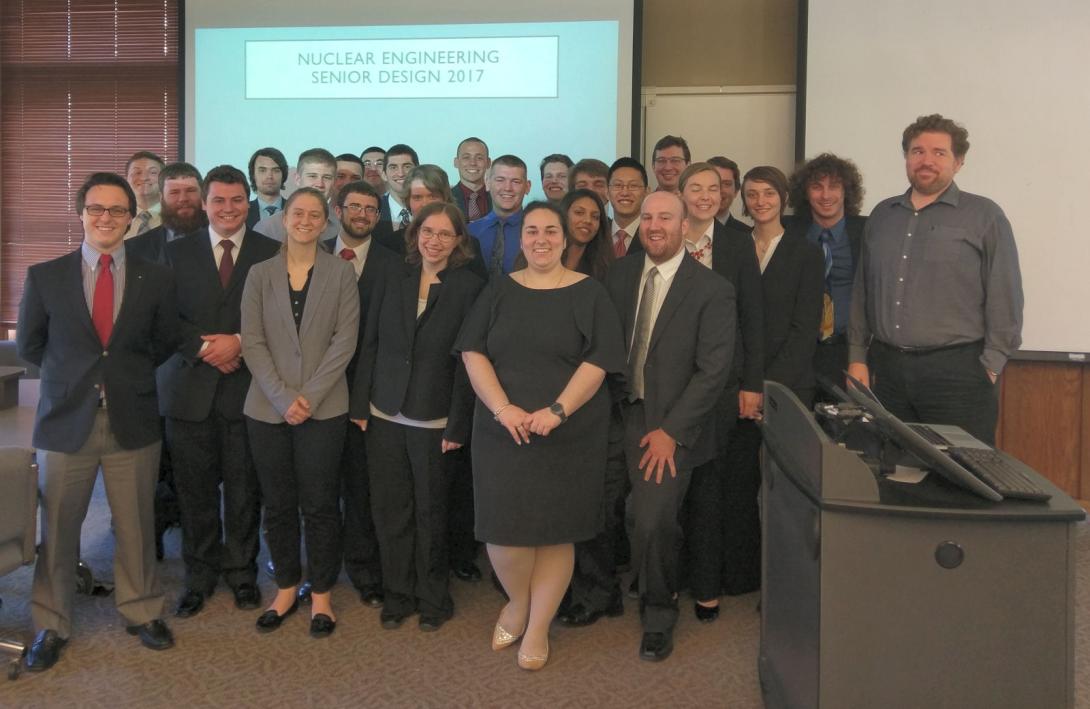Here is the class of 2017 and their Senior Design Projects

Here is the class of 2017 and their Senior Design Projects

Therefore, for this senior design project, an active eye lens dosimeter was designed. The proposed design is a CVD diamond, semiconductor detector that will hang down from a headband to sit near to the eye. A coaxial cable will connect the detector to a small data processing and power supply device that attaches at the hip, with the cable running from the headband down the physician’s back.
The goal of this project was to design an ice drilling system, powered by a nuclear reactor, capable of melting through the 25-km thick layer of ice, within 2 months and under specific constraints, in order to transport scientific equipment for exploration and analysis of the liquid ocean. This probe must also be capable of relaying information to the surface of Europa and have adequate shielding to protect the science equipment from radiation damage.
The overview for this system is that it will consist of a mobile radiation detector that can store the ambient dose and location where that data was taken. This data will then be remotely transmitted to a base station which hold the mapping software which uses the data to populate a map of the area. The detector module itself will be delivered by an aerial drone and placed in the necessary location.
This question was interpreted as a need for a device that alarms when it detects unusually high levels of radiation within a household. The device was broken up into four subsystems: detector, alarm, power, and structure. The detector detects background ionizing radiation and gives an analyzable output to the alarm in the form of a count rate. The alarm processes the detector output and raises an alarm if there is a statistically significant increase in count rate.
To be compatible with existing reactor technology and to remain in adherence to regulations, other parameters of the fuel system must be maintained to current standards. A review of these standards and requirements was conducted. Methods of increasing thermal conductivity and oxidation resistance were reviewed, and a combination of advanced sintering techniques and adding dopants to increase thermal conductivity and create a passivation layer for oxidation resistance were selected as engineering techniques.